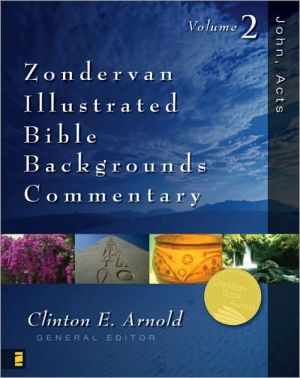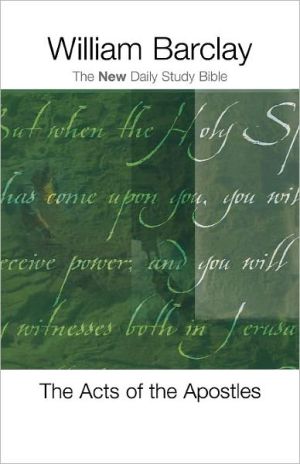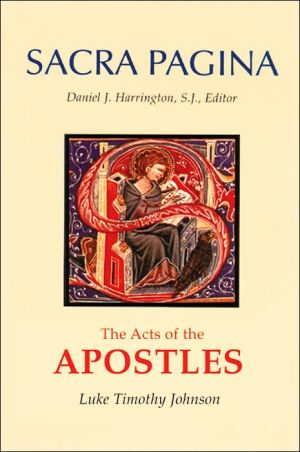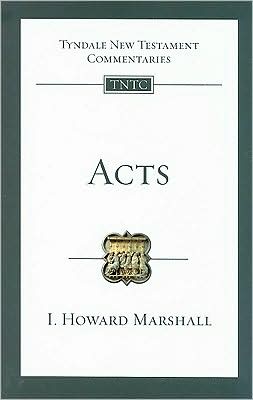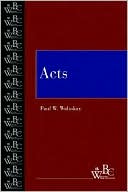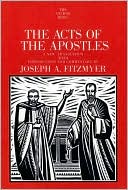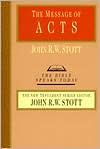John, Acts, Vol. 2
Discover\ - How the springs at Hierapolis help us understand why Jesus described the church at Laodicea as 'lukewarm'\ - The background and circumstances of certificates of divorce in Judaism\ - How Jewish dietary laws provided a powerful metaphor for God's acceptance of the Gentiles\ Brimming with lavish, full-color photos and graphics, the Zondervan Illustrated Bible Backgrounds Commentary walks you verse by verse through all the books of the New Testament. It's like slipping on a set of...
Search in google:
This is a hardcover set that helps readers understand the historical and cultural background of the books of the New Testament. Brimming with lavish, full color photos and graphics, each book will walk you verse by verse through the books of the New Testament.
John, Acts\ Volume Two \ \ Zondervan\ Copyright © 2002 Zondervan\ All right reserved.\ ISBN: 0-310-21807-1 \ \ \ \ Chapter One\ Who Wrote the Gospel? \ The Gospel itself claims to have been written by a member of Jesus' inner circle, an apostle, one of the Twelve. Since the apostolic office was foundational and unrepeatable in the history of the church (Acts 2:42; Eph. 2:20), their message, the gospel, has special authority. As an apostle (i.e., one specially commissioned by Jesus Christ), John was given a mission to testify to what he had seen and heard (John 15:27; 1 John 1:1-4). In fact, being an eyewitness of Jesus' ministry was an indispensable requirement for apostleship (Acts 1:21-22; cf. John 1:14).\ Implicit in John is also the claim of having been written by the disciple who was closest to Jesus during his earthly ministry. All the Gospel writers concur that John's relationship with Jesus was particularly close. In the present Gospel, the apostle conceals himself behind the expression "the disciple whom Jesus loved" (13:23; 19:26; 20:2; 21:20). As an apostolic eyewitness, John is uniquely qualified to write an authoritative account of Jesus' life: "The man who saw it has given testimony, and his testimony is true" (19:35; cf. 21:24).\ Where and Why Was the Gospel Written?\ John's purpose is bound up with believing in Jesus and having life in his name (20:30-31). By presenting certain startling events in Jesus' ministry as evidence that Jesus is the long-awaited Messiah, John seeks to lead his readers to place their faith in Jesus. In the aftermath of the destruction of Jerusalem and the temple in A.D. 70, John shows Jesus to be the fulfillment of Jewish as well as universal human aspirations.\ While ancient tradition places the writing of John's Gospel at Ephesus (Irenaeus, Haer. 3.1.2), the work ultimately transcends any one historical setting and applies to the entire church of John's as well as our day. Some of the material incorporated in this Gospel probably grew over years of preaching and teaching. John's awareness of the contents of the other canonical gospels may also have influenced his final selection of material.\ Together with Rome, Corinth, Antioch, and Alexandria, Ephesus ranked among the most important urban centers of the Roman empire. Located at the intersection of major trade routes, Ephesus was the largest and most well-known city of Asia Minor (modern Turkey).\ In an important development, Emperor Augustus declared Ephesus as capital of the province of Asia in place of Pergamum. The Ephesian temple of Artemis was one of the seven wonders of the ancient world, and its theater could seat 25,000 people. Ephesus acquired its first imperial temple (attaining to the status of neokoros, "temple warden") during the latter years of Domitian's reign (A.D. 81-96).\ A Gospel of Decision\ John's Gospel has rightly been called "a Gospel of decision." Every person must choose between light or darkness, faith or unbelief, life or death. Light, life, and salvation, in turn, can be attained only by faith in the crucified and risen Messiah, Jesus.\ The Word's Eternal Preexistence (1:1-2)\ Like the other evangelists, John gives an account of the life and ministry of Jesus. But he does so differently from the start. Matthew and Luke begin their Gospels with Jesus' family tree and an account of his birth. Mark jumps immediately to the ministry of John the Baptist, Jesus' forerunner. But John begins his account by showing Jesus embarking on a journey-not from Galilee to Jerusalem, but from existing eternally with God to becoming a human being like us. Thus we start in 1:1 in eternity past and arrive in 1:6 around A.D. 29 in the land of Palestine. Jesus' ministry is about to begin.\ In the beginning (1:1). When hearing the phrase "in the beginning," any person in John's day familiar with the Scriptures would immediately think of the opening verse of Genesis: "In the beginning God created the heavens and the earth." John reaches back even farther into eternity past. His point is that in the beginning, even prior to creation, someone already existed along with the Father: the Word (cf. 1 John 1:1).\ Was the Word (1:1). Echoes of the creation account continue here with allusion to the powerful and effective word of God ("And God said, 'Let there be light,' and there was light"; Gen. 1:3). The psalmists and prophets alike portray God's word (logos) in almost personal terms (e.g., Ps. 33:6; 107:20; 147:15, 18; Isa. 55:10-11). Isaiah, for instance, describes God's "word" as coming down from heaven and returning to him after achieving the purpose for which it was sent (Isa. 55:10-11). John takes the prophetic depiction of God's word in the Old Testament one decisive step further. No longer is God's word merely spoken of in personal terms; it now has appeared as a real person, the Lord Jesus Christ (cf. 1 John 1:1; Rev. 19:13).\ While the primary source of John's depiction of Jesus as the Word is the Old Testament, his opening lines would resonate with his Greek-speaking audience. In Stoic philosophy, for instance, logos was used to refer to the impersonal principle of Reason, which was thought to govern the universe. It is a mark of John's considerable theological genius that he is able to find a term ("the Word") that is at the same time thoroughly biblical-that is, rooted in Old Testament teaching-and highly relevant for his present audience.\ The Word was with God (1:1). The term "God" (theos) is familiar to John's readers since it refers to the God revealed in the Old Testament. This word occurs in Genesis 1:1 (LXX) with reference to the Creator. The same expression is also used for "god" in the Greco-Roman world whose pantheon was made up of dozens of deities. In contrast, the Jews believed in only one God (Deut. 6:4).\ The Word was God (1:1). Having distinguished the Word (i.e., Jesus) from God, John now shows what both have in common: They are God. From the patristic era (Arius) to the present (Jehovah's Witnesses), it has been argued that this verse merely identifies Jesus as a god rather than as God, because there is no definite article in front of the word theos. But John, as a monotheistic Jew, would hardly have referred to another person as "a god." Also, if he had placed a definite article before theos, this would have so equated God and the Word that the distinction established between the two persons in the previous clause ("the Word was with God") would have been all but obliterated. Clearly calling Jesus God stretched the boundaries of first-century Jewish monotheism.\ Moreover, in Greek syntax it is common for a definite nominative predicate noun preceding the verb einai (to be) not to have the article, so that it is illegitimate to infer indefiniteness from the lack of the article in the present passage. If, in fact, John had merely wanted to affirm that Jesus was divine, there was a perfectly proper Greek word for that concept (the adjective theios).\ The Word's Involvement in Creation (1:3-5)\ Through him all things were made (1:3). The affirmation that all things were made through wisdom or through God's Word is thoroughly in keeping with Jewish belief. John's contention, however, that everything came into being through "him"-that is, Jesus, God-become-flesh-is startling indeed. Nevertheless, this notion is in no way unique to John; it pervades much of the New Testament. Paul speaks of Jesus as the image of the invisible God, through whom and for whom all things were created (Col. 1:16). Jesus is the "one Lord ... through whom all things came and through whom we live" (1 Cor. 8:6). Hebrews refers to Jesus as God's Son through whom he made the universe (Heb. 1:2). The Aramaic Targum refers to the "word" (memra) of the Lord as an agent of creation. Greco-Roman parallels likewise portray various intermediaries as instrumental in creation (e.g., Lucretius, Rer. Nat. 1:4-5, 21-23 [first cent. B.C.]), as does Philo, the Hellenistic Jewish philosopher, who identifies wisdom and the Word (Alleg. Interp. 1.65; Heir 191; Dreams 2.242-45) and portrays the latter as the instrument through which the universe was created (Cherubim 127).\ Life ... light (1:4). Both "life" and "light" are universal religious terms, but John's teaching is deeply rooted in the Old Testament. At creation, calling forth "light" was God's first creative act (Gen. 1:3-5). Later, God placed lights in the sky to separate between light and darkness (1:14-18). Light, in turn, makes it possible for "life" to exist. Thus on the fifth and sixth days of creation, God makes animate life to populate both the waters and dry land, culminating in his creation of humankind (1:20-31; 2:7; 3:20).\ Now, according to John, life was "in him," Jesus. Jesus is the source of life, including both physical and spiritual ("eternal") life. He also is the source of light, since only those who possess spiritual, eternal life have within themselves the capacity to "walk in the light," that is, to make moral decisions that are in accordance with the revealed will of God.\ This again shows John's knack for contextualization. While drawing on solidly Old Testament concepts, he employs these universal terms to engage adherents of other religions and worldviews. For some, light was wisdom (or wisdom was even superior to light; cf. Wisd. Sol. 7:26-30); for others, light was given by the Mosaic law (2 Bar. 59:2) or Scripture (Ps. 19:8; 119:105, 130; Prov. 6:23); still others looked for enlightenment in philosophy, morality, or a simple lifestyle. Into this religious pluralism of his day, John proclaims Jesus as the supreme Light, who is both eternal and universal and yet personal.\ Light ... darkness (1:5). Beneath this contrast between light and darkness lies a significant cluster of Old Testament passages. Most interesting in this regard are several instances in Isaiah that depict the coming Messiah as a light entering the darkness. In Isaiah 9:2, we read that "the people walking in darkness have seen a great light; on those living in the land of the shadow of death a light has dawned." In Isaiah 60:1-5, a time is envisioned when the nations will walk in God's light and the glory of the Lord will shine brightly.\ Some believe John is here alluding to the Greek dualism between light and darkness. Rather than affirming belief in a personal God who is sovereign, all-powerful, and good, the Greeks viewed reality in terms of polar opposites, such as light and darkness or good and evil. John, however, refutes this kind of thinking in his first letter, where he states emphatically, "God is light; in him there is no darkness at all" (1 John 1:5). Another kind of light/darkness dualism is found in the Dead Sea Scrolls, particularly in the so-called "War Scroll" (1QM) depicting the battle between the "sons of light" and the "sons of darkness." But because of the sectarian nature of the Qumran community, light is never offered to those who live in darkness (cf. 1QS 3:21; 4:9-14).\ In John, however, Jesus urges his listeners to "put your trust in the light while you have it, so that you may become sons of light" (John 12:36; cf. 8:12; 9:5). Light and darkness are no equally matched duality, but in the titanic battle between Jesus and Satan, Jesus, "the light," emerges as the overwhelming victor. Regarding this final outcome, John's readers are never left in suspense. Rather, the evangelist announces at the outset that the darkness has not overcome the light (1:5). To be sure, at the cross, the forces of evil appear to have gained the upper hand; but this is followed by the resurrection.\ John the Witness to the Light (1:6-8)\ A man ... sent from God (1:6). The evangelist now moves on to anchor Jesus' ministry firmly in salvation history. This phrase is reminiscent of the Old Testament description of a prophet whose role was to function as a spokesman for God (e.g., Ezek. 2:3).\ His name was John (1:6). The name "John," a common name in the Hellenistic world of that day, occurred frequently among the members of the Jewish priesthood, which included John's father Zechariah (Luke 1:5). "John" in this Gospel always means "John the Baptist." The "other John" known from Matthew, Mark, and Luke-that is, John the apostle, the son of Zebedee-is not referred to by name in this Gospel. It is likely that he, as the author of the present gospel, conceals himself behind the phrase "the disciple whom Jesus loved" (first used in 13:23; see comments there).\ All ... might believe (1:7). The desired (though not actual) result of John's ministry is that "all might believe" in Jesus (cf. comments on 1:9). The expression "believe" is found frequently in the Old Testament to describe the trust God desires from his people. Abraham "believed the Lord" and thus became the father, not just of the Jewish nation, but of all believers (Gen. 15:6). Israel as a nation, on the other hand, is known in the Old Testament not so much for her faith in God as for her unbelief (John 12:38; cf. Isa. 53:1). While John is not averse to "believing" as the affirmation of certain religious truths, he is much more concerned about active, relational trust in Jesus Christ.\ The World's Rejection of the Light (1:9-11)\ The true light (1:9). The coming of the Messiah is frequently depicted in the Old Testament in terms of light. An important oracle, picked up also by Qumran, envisions the coming of "a star" out of Jacob (Num. 24:17). Isaiah, too, describes the coming of the Messiah as "a light" shining in darkness (Isa. 9:2; cf. 42:6-7; see comments on John 1:5). Malachi announces that "the sun of righteousness will rise with healing in its wings" (Mal. 4:2). Echoing these words, Zechariah (father of John the Baptist) says about Jesus that "the rising sun will come to us from heaven to shine on those living in darkness" (Luke 1:78-79). By affirming that Jesus is the "true light"-just as he is the "true bread from heaven" (John 6:32) and the "true vine" (15:1)-John indicates that Jesus is the fulfillment of Old Testament hopes and expectations.\ Some have suggested that John is here engaging the Greek dualism between shadow and reality, contending that the expression "true light" is better rendered "real light" (in distinction to a mere resemblance). Perhaps some of John's Greek-speaking readers took it that way. But the primary contrast seems to be, not between real over against ideal in the Greek sense, but between earlier manifestations of God in Old Testament times through the law or various prophets and God's final, definitive revelation through Jesus Christ (cf. 1:17; 5:39; 12:38; cf. Heb. 1:1-3).\ \ Continues...\ \ \ \ Excerpted from John, Acts Copyright © 2002 by Zondervan. Excerpted by permission.\ All rights reserved. No part of this excerpt may be reproduced or reprinted without permission in writing from the publisher.\ Excerpts are provided by Dial-A-Book Inc. solely for the personal use of visitors to this web site. \ \
IntroductionviiList of SidebarsixList of ChartsxiiIndex of Photos and MapsxiiiAbbreviationsxviiiJohn2Acts218Credits for Photos and Maps504
